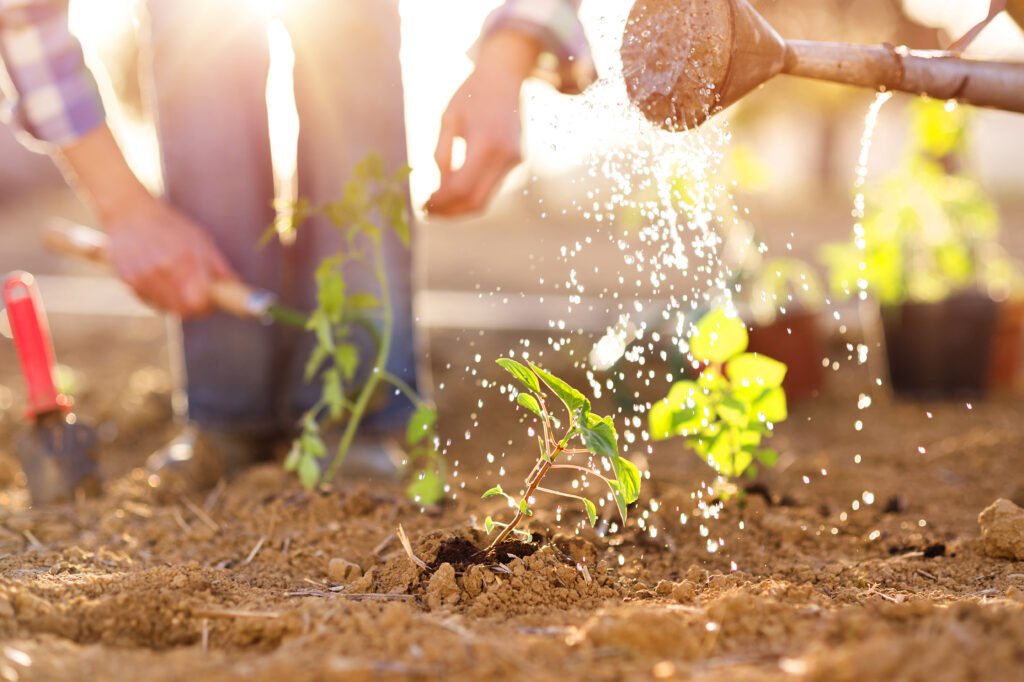Starting a home garden can help you save money and get closer to nature. Even a few basic homegrown herbs and vegetables can positively impact your budget and overall health. While there’s no way to go around certain upfront costs, there are steps you can take to maximize savings from your garden after the initial setup. Here are five tips to help you save money on your home garden.
1. Sow Seeds Instead of Seedlings
While seedlings save you time, seeds save you money. You just need to be organized and plan ahead because it takes time for seeds to germinate and grow to a point where you can transplant them. However, you can harvest more plants from a packet of seeds compared to a punnet of seedlings. Although seed packet prices vary, most edible flowers, sprouting seeds, microgreens, herbs, and vegetable varieties go for two to four dollars on average. For some varieties, you can get hundreds of seeds in a packet, enough to last a lifetime or to swap or sell.
2. Choose the Right Spot for Your Garden
Regardless of where you decide to put your garden or the plants you intend to grow, there are two fundamental requirements your chosen spot must fulfill for the best success: light and water. Vegetables, like other plants, rely on the sun to initiate photosynthesis. Vegetables that grow fast generally require at least six to eight hours each day in direct sunlight without obstruction from fences, shrubs, or trees. According to Arbor Day, areas under a tree’s shade can be 20 to 45 degrees cooler. That’s why planting sun-loving vegetables in shady areas won’t yield much.
If your garden receives partial shade, plant herbs, and vegetables that can withstand those conditions. These include thyme, parsley, cilantro, chives, spinach, chard, kale, and lettuce. If your chosen spot gets at least four hours of sunlight a day, consider root vegetables such as beets, radishes, and carrots. If you have a sunny patio, container gardening is a better fit. This approach allows you to place sun-loving herbs and vegetables like rosemary, dill, basil, beans, cucumbers, and tomatoes, where they’ll thrive.
3. Mulch Your Garden
Mulching your garden can work wonders for your budget. It conserves water and prevents weeds from sprouting, so there’s less weeding and no need for herbicides. To protect your established trees and shrubs from the effects of weather, surround them with a layer of two to three inches of brown compost, birch chips, wood shavings, or dried leaves.
4. Attend Plant Swaps
Plant swaps are events where plant enthusiasts come together to trade specimens. Attending these events allows one to swap a plant you don’t want for one you love for free. You can also find free plants by logging on to your town or neighborhood online forum for local gardeners.
5. Pick Plants with Multiple Functions
If you’re working with a small space, make cautious plant selections. Grow plants that serve at least two purposes, which means you’ll need fewer plants. For instance, blooming herbs such as chives, basil, and mint taste great. When they bloom, they attract helpful insects like hoverflies, ladybirds, and bees that feed on pollen and nectar. In turn, these insects provide crucial ecosystem services, such as pollinating food crops and managing pests such as aphids.
You don’t need lean beef to get your recommended daily amounts of 10 key vitamins and nutrients, including B vitamins, riboflavin, selenium, niacin, zinc, magnesium, and iron. You can get your nutrients from your garden! You should also consider planting oilseed rape, cotton, soybeans, and maize, which make up 99% of global crops worldwide. Get started on your vegetable garden today and it won’t be long until you start reaping the benefits.


